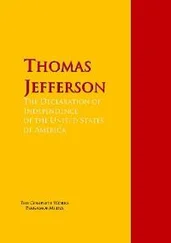Kendric Babcock - The Scandinavian Element in the United States
Здесь есть возможность читать онлайн «Kendric Babcock - The Scandinavian Element in the United States» — ознакомительный отрывок электронной книги совершенно бесплатно, а после прочтения отрывка купить полную версию. В некоторых случаях можно слушать аудио, скачать через торрент в формате fb2 и присутствует краткое содержание. Жанр: foreign_antique, foreign_prose, на английском языке. Описание произведения, (предисловие) а так же отзывы посетителей доступны на портале библиотеки ЛибКат.
- Название:The Scandinavian Element in the United States
- Автор:
- Жанр:
- Год:неизвестен
- ISBN:нет данных
- Рейтинг книги:5 / 5. Голосов: 1
-
Избранное:Добавить в избранное
- Отзывы:
-
Ваша оценка:
- 100
- 1
- 2
- 3
- 4
- 5
The Scandinavian Element in the United States: краткое содержание, описание и аннотация
Предлагаем к чтению аннотацию, описание, краткое содержание или предисловие (зависит от того, что написал сам автор книги «The Scandinavian Element in the United States»). Если вы не нашли необходимую информацию о книге — напишите в комментариях, мы постараемся отыскать её.
The Scandinavian Element in the United States — читать онлайн ознакомительный отрывок
Ниже представлен текст книги, разбитый по страницам. Система сохранения места последней прочитанной страницы, позволяет с удобством читать онлайн бесплатно книгу «The Scandinavian Element in the United States», без необходимости каждый раз заново искать на чём Вы остановились. Поставьте закладку, и сможете в любой момент перейти на страницу, на которой закончили чтение.
Интервал:
Закладка:
By 1837 a goodly number were determined to emigrate, and had disposed of their holdings of land. A way opened for them to make the long voyage under especially favorable circumstances. Captain Behrens, owner and commander of the ship Ægir , on his return to Bergen in the autumn of 1836, learned that a large party wanted transportation to America. In New York he had seen vessels fitted up for the English and German immigrant traffic; he had learned the requirement, of the laws of the United States on the subject; two German ministers who returned to Europe in his ship, gave him further information. He therefore fitted up his vessel for passengers, and carried out his contract to transport to New York the party which finally numbered 84, being mainly made up of married men each with “numerous family,” at least one of which counted eight persons. 61 61 Langeland, Nordmændene i Amerika , 25 ff.
From New York the company proceeded to Detroit, where they were joined by the two Nattestad brothers from Numedal, and from thence they went by water to Chicago.
Their original intention was to go to the La Salle County settlement, but in Chicago they met some of the Fox River people, Björn Anderson among others, who gave such an unfavorable account of conditions in that colony that the majority determined to seek another location. At the instigation of certain Americans, presumably land speculators, a prospecting party of four, including Ole Rynning, one of the leading spirits of the company, went into the region directly south of Chicago and finally chose a site on Beaver Creek. Thither about fifty immigrants went, and began the third Norwegian settlement, which proved to be the most unfortunate one in the history of Norwegian immigration. Log huts were built and the winter passed without unusual hardships, tho it was soon evident that a mistake was made in settling so far from neighbors and from a base of supplies at that time of the year when the soil produced nothing. Serious troubles, however, developed with the spring, and grew with the summer. The land which appeared so dry and so well-covered with good grass when it was selected and purchased in August or September, proved to be so swampy that cultivation was impossible before June. Malaria attacked the settlers, and as they were beyond the reach of medical aid, nearly two-thirds of them died before the end of the summer. The remnant of the colony fled as for their lives, regardless of houses and lands, and scarcely one of them remained on the ground by the end of 1838. 62 62 Langeland, Nordmændene i Amerika , 30 ff; Anderson, Norwegian Immigration , 195 ff.
One of the victims of these hard experiences was Ole Rynning, who succumbed to fever in the autumn of 1838. Tho in America scarcely a year and a half, he is one of the uniquely important figures in the history of Norwegian immigration. The son of a curate in Ringsaker in central Norway, and himself dedicated by his parents to the church, he passed the examinations for entrance to the University of Christiania, but turned aside to teaching in a private school near Throndhjem for four years before his emigration. 63 63 Anderson, Norwegian Immigration , 203-205; Langeland, Nordmændene i Amerika , 31. Much information regarding Rynning was derived from the Rev. B. J. Muus, of Minnesota, a nephew of Rynning.
He is invariably spoken of as a man of generous, philanthropic spirit, genuinely devoted to the human needs of his fellow immigrants.
Having learned by personal observation in America the answers to many of the questions which he, as a man of education, had asked himself in Norway, he took advantage of the confinement following the freezing of his feet during a long exploring tour in Illinois, to write a little book of some forty pages, to which he gave the title (in translation): “A true Account of America, for the Instruction and Use of the Peasants and Common people, written by a Norwegian who arrived there in the Month of June, 1837.” 64 64 Sandfærdig Beretning om Amerika til Veiledning og Hjælp for Bonde og Menigmand, skrevet af en Norsk som kom der i Juni Maaned, 1837.
The manuscript of this first of many guidebooks for Norwegian emigrants was taken back to Norway by Ansten Nattestad and printed in Christiania in 1838. 65 65 Billed Magazin , I, 94.
It plays so large a part in a great movement, that a detailed analysis is worth presenting.
The preface, bearing the author’s signature and the date, “Illinois, February 13, 1838,” is translated as follows:
“Dear Countrymen, – Peasants and Artisans! I have now been in America eight months, and in that time I have had an opportunity of finding out much in regard to which I in vain sought information before I left Norway. I then felt how disagreeable it is for those who wish to emigrate to America to be in want of a reliable and tolerably complete account of the country. I also learned how great is the ignorance of the people, and what false and ridiculous reports were accepted as the full truth. In this little book it has, therefore, been my aim to answer every question which I asked myself, and to clear up every point in regard to which I observed that people were ignorant, and to disprove false reports which have come to my ears, partly before I left Norway, and partly after my arrival here.” 66 66 Anderson, Norwegian Immigration , 207-208. In making this and the following translations, Mr. Anderson used the copy of Rynning’s book belonging to the Rev. B. J. Muus, the only copy known to be in America. This copy is now in the library of the University of Illinois.
The body of the book is made up of thirteen chapters devoted to these questions and their answers:
1-3. The location of America, the distance from Norway, the nature of the country, and the reason why so many people go there.
4. “Is it not to be feared that the land will soon be overpopulated? Is it true that the government there is going to prohibit immigration?”
5-6. What part of the land is settled by Norwegians, and how is it reached? What is the price of land, of cattle, of the necessaries of life? How high are wages?
7. “What kind of religion is there in America? Is there any sort of order and government, or can every man do what he pleases?”
8-9. Education, care of the poor, the language spoken in America, and the difficulties of learning it.
10. Is there danger of disease in America? Is there reason to fear wild animals and the Indians?
11. Advice as to the kind of people to emigrate, and warning against unreasonable expectations.
12. “What dangers may be expected on the ocean? Is it true that those who are taken to America are sold as slaves?”
13. Advice as to vessels, routes, seasons, exchange of money, etc.
Rynning assured his readers, in the seventh chapter, that America is not a purely heathen country, but that the Christian religion prevails with liberty of conscience, and that “here as in Norway, there are laws, government, and authority, and that the common man can go where he pleases without passport, and may engage in such occupation as he likes.” 67 67 Rynning, Sandfærdig Beretning , 23, 24. Translated in Anderson, Norwegian Immigration , 214-215.
Then follows this strong, significant paragraph, intelligently describing the slavery system, which undoubtedly had a powerful influence on the future location, and hence on the politics, of the immigrants from Scandinavia:
“In the Southern States these poor people (Negroes) are bought and sold like other property, and are driven to their work with a whip like horses and oxen. If a master whips his slave to death or in his rage shoots him dead, he is not looked upon as a murderer… In Missouri the slave trade is still permitted, but in Indiana, Illinois, and Wisconsin Territory it is strictly forbidden, and the institution is strictly despised… There will probably soon come a separation between the Northern and Southern States or a bloody conflict.”
Читать дальшеИнтервал:
Закладка:
Похожие книги на «The Scandinavian Element in the United States»
Представляем Вашему вниманию похожие книги на «The Scandinavian Element in the United States» списком для выбора. Мы отобрали схожую по названию и смыслу литературу в надежде предоставить читателям больше вариантов отыскать новые, интересные, ещё непрочитанные произведения.
Обсуждение, отзывы о книге «The Scandinavian Element in the United States» и просто собственные мнения читателей. Оставьте ваши комментарии, напишите, что Вы думаете о произведении, его смысле или главных героях. Укажите что конкретно понравилось, а что нет, и почему Вы так считаете.












